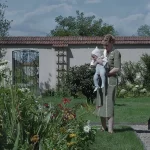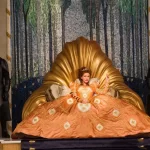Stan & Ollie: Old Familiar Steps, by Scott Nye

The past is a funny thing; even if we’ve directly experienced it, attempting to situate another person firmly in the day-to-day experiences of lives now gone will almost inevitably come tinged with a sense of comfort. Even in relaying a horrid story, we the audience understand the finality of the time in a way those experiencing it could not. We know, if not how its specific circumstances turn out, how they time in which they lived developed and how some of their worries became resolved, for good or ill. We can never fully share their uncertainty.
This is much more true for stories about famous people, with whose lives we might have greater familiarity, or at least with whose personas we’ve come to associate certain traits. Nevertheless, it is in some way the duty of the storyteller to relate the emotional urgency they feel, to not give in fully to the nostalgia of their lives, the comfort of spending a bit of time with some beloved figure. And I guess by now you can rightly assume that Jon S. Baird’s Stan & Ollie, a slice-of-life biopic of Stan Laurel and Oliver Hardy, does not meet this rather reasonable request, despite some admirable efforts in its approach to performance.
Laurel and Hardy, as they were known by the millions of people who made them one of the most popular acts in the industry during the late 1920s and through the 1930s, are approached in this film not through their golden years, but through their brief attempt to resuscitate their stagnant careers in the early 1950s through a stage tour in Europe. The film makes more of their plight than is apparently true, insisting that they’ve been estranged for over a decade and are approaching one another with great caution – in reality, their first European tour happened in 1947, two years after their final film for 20th Century Fox and four years before the final film, period.
But let’s say the spirit of the thing in true, or at the most generous assume that it might just be a nice story. Two old partners come together for one last hurrah; always a good start. But Baird can’t see past their onscreen personas, regularly using the mundane rhythms of a multi-city tour (checking into a hotel, dragging luggage around) to call back to the rhythms or even specific bits from their films. Steve Coogan (as Stan) and John C. Reilly (as Ollie) bring a certain degree of depth that actors of their experience almost reflexively impart, but even they seem complicit in the film’s goal to enshrine these stars in ember, preserving the perfection of their talent rather than the fallibility of their humanity. Their mistakes and personal shortcomings are all traits that can soon be rectified, the persistence of their talent always winning out.
The worst offender in all this is the usually-stellar cinematographer Laurie Rose, whose work has considerably elevated the otherwise-declining inspiration of Ben Wheatley’s work, but here casts everything in a golden sheen, pointedly declining even the possibility of seeing past the nostalgia of the operation. The film’s great saving grace is its supporting cast, starting with Shirley Henderson and Nina Arianda and Ollie and Stan’s respective wives, Lucille and Ida, and extending down to the smallest bit players. This is the strongest lesson Stan & Ollie takes from the golden age of Hollywood – that every character is a person with a rich, full life and personality, not merely the cogs in a narrative or aesthetic machine that the vast majority of modern film sees them to be.
All the sadder that their spirit and personality are made to fit into this strange living animatronic show, a collection of reenactments designed to say nothing more than that Oliver and Hardy sure were talented and what a shame that some imagined audience that will never see this film has forgotten them. The lifeless affair could never convince an unfamiliar audience; this is not made for them. This is made for people whose warm feelings need warming, and so warmed they shall be. Had it more wits, I’d call it cynical, but it’s too lifeless to even be that.





























First, the still doesn’t not show the actor portraying Laurel, but an actor portraying a temporary partner with Hardy.
Second, I don’t recall anything in the film inconsistent with the fact that there had been a previous Europe tour — this reviewer makes it sound like they had the wrong side winning the U.S. Civil War.
As for the rest, he seems disappointed this was not a re-imagining of Who’s Afraid of Virginia Woolf. This guy is a sourpuss. You will love the movie.
The so-called movie critic is looking for recognition by way of limp controversy. You can see it in the words of the review,